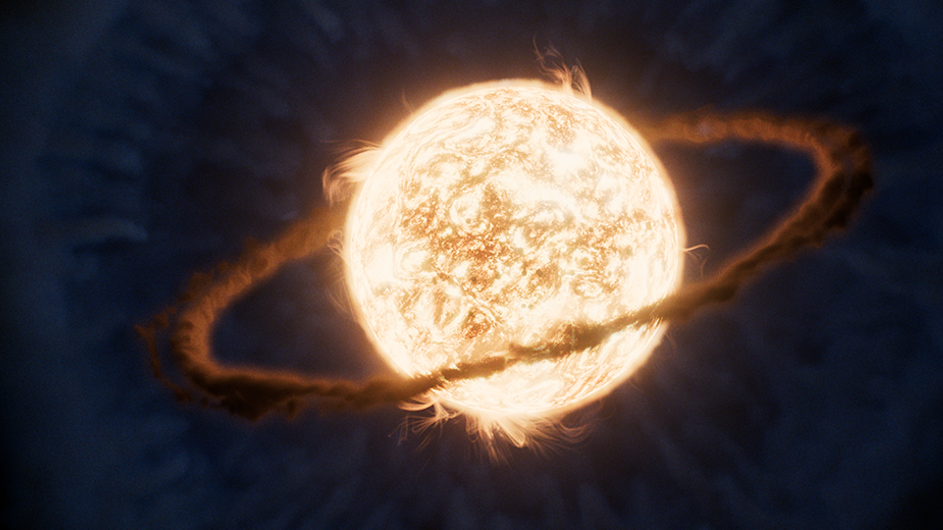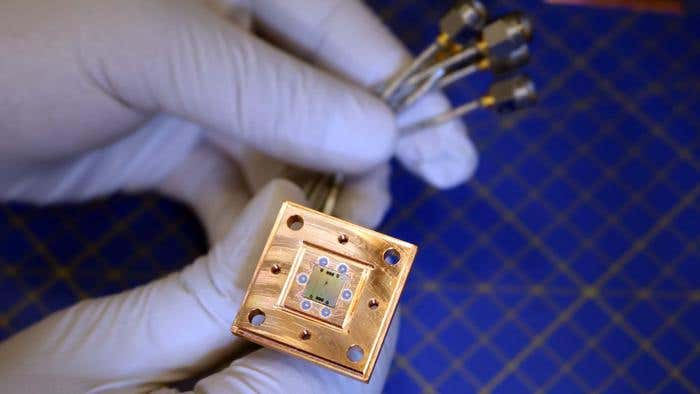JWST captures first views of a planet swallowed by a star in real time
Webb Telescope reveals the first confirmed case of a star consuming a planet, changing what we know about planetary death.

NASA’s James Webb Space Telescope’s observations of what is thought to be the first-ever recorded planetary engulfment event. (CREDIT: NASA, ESA, CSA, R. Crawford [STScI])
A sudden flash of light in 2020 caught the attention of astronomers scanning the sky. That brief signal, spotted by Caltech’s Zwicky Transient Facility, came from deep within the Milky Way, roughly 12,000 light-years from Earth. The source, a faint red nova known as ZTF SLRN-2020, soon proved to be more than just another stellar outburst.
Thanks to a powerful combination of telescopes and analysis, it now represents the most compelling evidence yet of a star devouring one of its own planets.
A planetary death, years in the making
The initial 2020 outburst looked like a typical nova at first glance. But its unusual brightness pattern and strange lack of typical atomic features told a different story. Follow-up observations using ground-based instruments, including the 200-inch Hale Telescope at Palomar Observatory and the Keck II Telescope, revealed a cool, red continuum and molecular features like TiO, VO, and CO. These signs pointed toward the presence of a cool outer layer, consistent with an M-type giant star around 3,600 Kelvin in temperature.
This wasn't a normal stellar event. Instead, it appeared to be the violent end of a planet—roughly the size of Jupiter—that had spiraled into its host star. The idea, known in astronomy as a planetary engulfment, had been predicted for decades but never directly observed—until now.
What made ZTF SLRN-2020 even more unusual was its brief flash of optical light, which lasted less than 100 days, followed by a long, dusty infrared glow. These features are typical of red novae, usually linked to stellar mergers. But ZTF SLRN-2020 burned much dimmer than those known mergers, suggesting the merging object was not another star, but a far smaller companion—a planet.
Webb brings clarity to a dusty aftermath
Despite the early clues, questions remained about what truly caused the outburst. Some suspected the star had reached the end of its life, swelling into a red giant and engulfing its planetary companion. That would have been a natural explanation—stars are known to expand dramatically as they run out of hydrogen.
Related Stories
But fresh data from NASA’s James Webb Space Telescope rewrote that script.
Using the MIRI and NIRSpec instruments on board Webb, scientists took a closer look at the star 830 days after the outburst. They detected signs of warm circumstellar dust and molecular gas, including strong carbon monoxide emission and a possible trace of phosphine around 4.3 microns. More importantly, the observed brightness and temperature of the remaining star didn’t match the profile of a red giant.
Instead, Webb revealed that the star was still on the main sequence—a stable phase of its life—and hadn't yet begun to expand. The planet hadn't been consumed by swelling stellar layers. It had been pulled in slowly by tidal forces over millions of years, its orbit decaying until it grazed the star’s surface and triggered a runaway inward spiral.
“This is such a novel event,” said Ryan Lau, an astronomer at NSF NOIRLab and lead author of the new study. “We didn’t quite know what to expect when we decided to point this telescope in its direction.”
The study, published in The Astrophysical Journal, used data collected through Webb’s Guaranteed Time Observation program, which reserves telescope time for unpredictable events like this one.
Falling into the fire
Once the planet began brushing the star's atmosphere, its destruction became unavoidable. Each pass drew it closer. Eventually, it crashed into the stellar surface in a final, catastrophic spiral.
“The planet eventually started to graze the star's atmosphere. Then it was a runaway process of falling in faster from that moment,” said Morgan MacLeod, a team member from Harvard-Smithsonian Center for Astrophysics and MIT. “The planet, as it’s falling in, started to sort of smear around the star.”
This collision ejected gas from the star’s outer layers, which cooled and formed dust, creating the infrared glow seen long after the optical flash faded. Over time, that material formed two separate dust components—one cooler and more massive, and one warmer and likely made of fallback debris. Using DUSTY, a radiative transfer model, astronomers estimated the temperatures, dust mass, and geometry of this evolving debris.
Colette Salyk, a co-author from Vassar College, said she was surprised to find a structure resembling a planet-forming disk in the aftermath of destruction. “With such a transformative telescope like Webb, it was hard for me to have any expectations of what we’d find,” she said.
A warning from across the stars
The parent star—estimated to be around 0.7 solar masses—had not yet exhausted its fuel. If left undisturbed, it might have remained stable for billions more years. But the gravitational dance between star and planet gradually shortened the planet’s orbit until its end was inevitable.
Previously, theories of planetary engulfment were tied to late-stage stellar evolution. Older stars expand, eventually swallowing close-in planets. But this discovery shows destruction can come much sooner through tidal forces alone.
“This result offers new directions for us to understand how stars and planets may co-evolve with each other,” said Kishalay De, assistant professor of astronomy at Columbia University and author of the original 2023 paper that identified the event. “It helps us interpret the population of surviving planets we currently discover around other nearby stars.”
The planetary companion likely orbited closer than Mercury does around our Sun. Many exoplanets discovered in recent years, especially “hot Jupiters” with orbits shorter than 10 days, may be on similar paths toward destruction.
Red novae like ZTF SLRN-2020 provide a valuable look into this extreme phase of planetary systems. Their dusty, infrared-luminous aftermaths allow researchers to peer into the inner workings of star-planet interactions. Signatures of certain chemicals, like elevated lithium or abnormal metallicity in stellar atmospheres, may offer further clues that planets have been swallowed in the past.
What comes next
The rarity of real-time engulfment events means every new discovery counts. ZTF SLRN-2020 is still the only known case observed as it happened, and its aftermath is helping to refine models of stellar evolution, orbital decay, and system instability.
Webb’s mid-infrared power will remain key in spotting more of these events. But upcoming surveys promise to broaden the search. Facilities like the Vera C. Rubin Observatory and NASA’s Nancy Grace Roman Space Telescope will scan wide areas of the sky frequently, improving the odds of spotting another flash of light that signals a planet’s fiery end.
“This is truly the precipice of studying these events,” said Lau. “We hope this is just the start of our sample.”
The death of a world around a distant star may feel far removed from daily life. But understanding these rare events brings insight into the future of planetary systems—including our own. One day, our solar system may end not with a bang, but with a silent, unseen spiral into the heart of the Sun.
Note: The article above provided above by The Brighter Side of News.
Like these kind of feel good stories? Get The Brighter Side of News' newsletter.
Joshua Shavit
Science & Technology Writer | AI and Robotics Reporter
Joshua Shavit is a Los Angeles-based science and technology writer with a passion for exploring the breakthroughs shaping the future. As a contributor to The Brighter Side of News, he focuses on positive and transformative advancements in AI, technology, physics, engineering, robotics and space science. Joshua is currently working towards a Bachelor of Science in Business Administration at the University of California, Berkeley. He combines his academic background with a talent for storytelling, making complex scientific discoveries engaging and accessible. His work highlights the innovators behind the ideas, bringing readers closer to the people driving progress.



